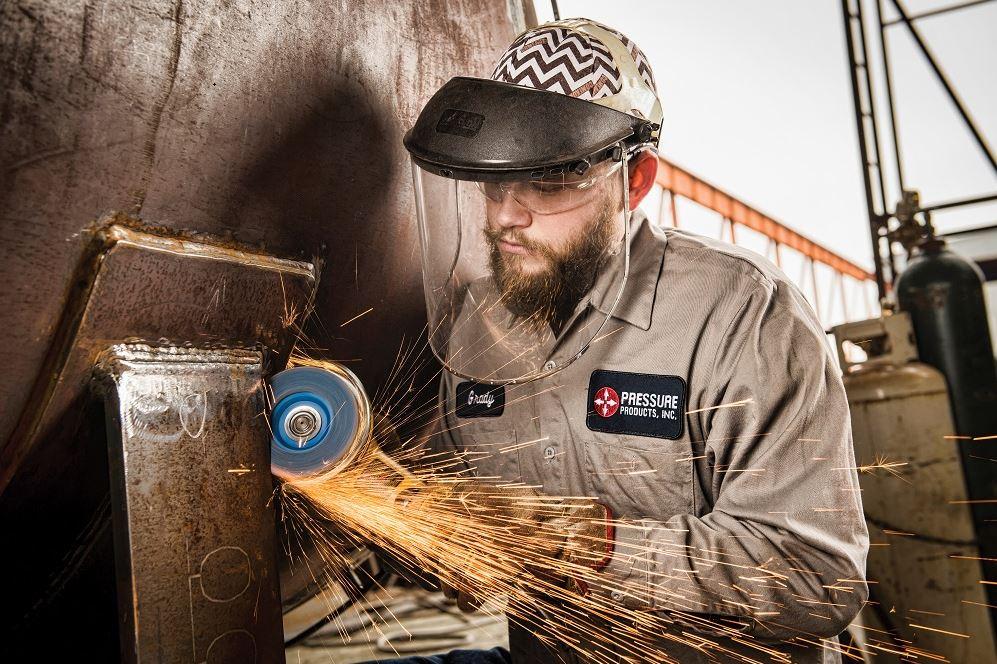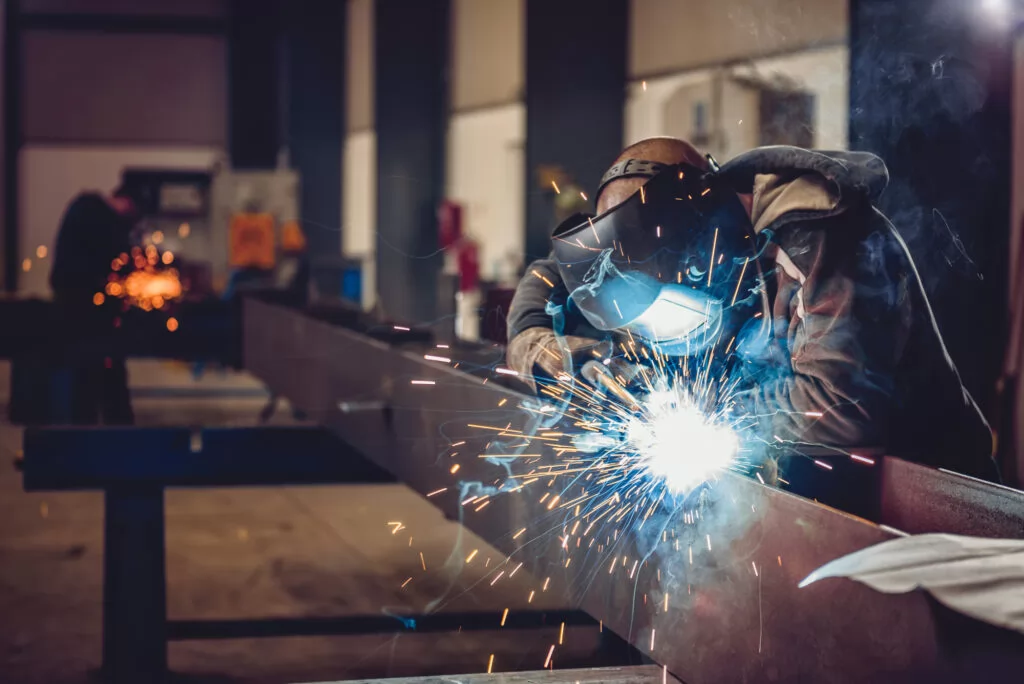Common Welding Repair Work Issues and Just How to Address Them Effectively
Welding repair work usually encounter a series of issues that can jeopardize the stability of the final product. Typical issues include insufficient infiltration, porosity, and imbalance, to name a few. Each flaw provides one-of-a-kind challenges that require specific approaches for resolution. Understanding these problems is crucial for welders aiming to boost their end results and skills. This discussion will certainly discover these usual welding fixing concerns and effective approaches to resolve them.
Poor Infiltration
Insufficient penetration happens when the weld metal falls short to fully fuse with the base material, resulting in weak joints and possible structural failures. This issue usually comes from inadequate warm input, wrong electrode angle, or improper welding rate. Welders might come across inadequate infiltration due to a mistake of the required parameters for a details product thickness or kind. In addition, contamination on the base product's surface can prevent effective bonding, aggravating the issue. To attend to inadequate penetration, welders ought to assure suitable settings on their tools and maintain a tidy work surface area. Regular assessment of welds is advised to recognize any kind of shortages early, enabling timely modifications and the prevention of jeopardized architectural honesty in welded settings up.
Porosity
Porosity is an usual defect in bonded joints that shows up as tiny gas bubbles caught within the weld steel. This issue can jeopardize the integrity of the weld, bring about reduced stamina and possible failing under tension. Montana Mobile Welding and Repair Belgrade. Porosity typically develops from contamination, moisture, or improper welding methods, which permit gases to escape right into the liquified weld pool. To address porosity, welders need to ensure appropriate surface area prep work, preserve a tidy workplace, and use suitable welding specifications. In addition, picking the right filler product and protecting gas can reduce gas entrapment. Regular examination and screening of welds can help determine porosity early, assuring prompt corrective actions are taken, therefore protecting the top quality and reliability of the welded structure
Misalignment
Imbalance in welding can develop from numerous variables, consisting of incorrect setup and thermal expansion. Comprehending the source is vital for effective resolution. Several modification methods are readily available to realign parts and ensure architectural honesty.
Causes of Imbalance
Welding imbalance typically originates from a selection of underlying issues that can jeopardize architectural integrity. One primary cause is improper fit-up of parts before welding, which can result in voids and irregular surface areas. Variations in thermal development throughout the welding process can likewise result in distortion, particularly if the products being joined have various coefficients of development. In addition, poor fixturing and clamping might fall short to hold elements safely in place, bring about motion throughout welding. Improperly conserved devices, including welding makers and tools, might present disparities in the weld grain, further adding to misalignment. Lastly, driver mistake, originating from not enough training or experience, can also play a considerable role in developing misaligned welds.
Correction Techniques Available
Resolving imbalance properly needs a mix of restorative methods customized to the certain problems handy. One usual method is the usage of components or jigs to hold elements in the correct setting throughout welding, ensuring constant positioning. In addition, preheating the products can assist minimize distortion and boost fit-up. For significant imbalance, mechanical adjustment strategies, such as making use of hydraulic jacks or clamps, can be used to deal with the position prior to welding. Post-weld heat therapy may also be necessary to soothe stress and anxieties triggered by misalignment. Ultimately, cautious evaluation and change throughout the configuration phase can avoid misalignment problems from coming to be significant troubles, promoting a smoother welding procedure and enhancing general architectural integrity.
Distortion
Distortion is an usual difficulty in welding that can occur from numerous variables, consisting of unequal cooling and heating. Understanding the sources of distortion is vital for implementing efficient prevention techniques. Addressing this concern not just boosts structural stability yet also boosts the total high quality of the weld.
Root causes of Distortion
When based on the intense warmth of welding, products commonly undergo modifications that can bring about distortion. This sensation largely wikipedia reference occurs from thermal expansion and contraction throughout the welding process. As the weld location warms up, the material increases; upon cooling, it contracts, which can create internal tensions. Furthermore, irregular heating across a work surface can intensify these stress and anxieties, leading to bending or bending. The kind of material likewise plays a substantial role; metals with varying thermal conductivity and coefficients of development might respond differently, causing unforeseeable distortions. Furthermore, bad joint design and insufficient fixturing can contribute to imbalance during welding, increasing the possibility of distortion. Recognizing these reasons is important for effective welding repair service and avoidance strategies.
Avoidance Techniques
Efficient avoidance methods for distortion during welding concentrate on managing warmth input and ensuring appropriate joint design. Preserving a regular heat input helps to lessen thermal development and tightening, which can cause distortion. Utilizing methods such as pre-heating the workpiece can additionally minimize the temperature level gradient, advertising uniform home heating. Furthermore, selecting appropriate joint designs, such as T-joints or lap joints, can enhance security and reduce tension focus. Implementing proper fixturing to safeguard the work surfaces in area even more aids in maintaining alignment throughout the welding process. Lastly, staggered welding sequences can distribute warmth extra evenly, avoiding local distortion. By applying these try here strategies, welders can significantly decrease the possibility of distortion and enhance the general high quality of their welds.
Fracturing
Splitting is a common problem experienced in welding repair work, typically arising from different variables such as incorrect air conditioning rates, material selection, or inadequate joint prep work. The occurrence of fractures can considerably endanger the integrity of the weld, causing possible failures throughout procedure. To address this concern, welders must initially assess the origin, making certain that products are suitable and properly chosen for the specific application. Furthermore, managing the cooling price during the welding process is crucial; rapid cooling can induce stress and anxiety and lead to fracturing. Proper joint style and preparation additionally contribute to lessening the threat. Carrying out these strategies can improve weld high quality and durability, eventually minimizing the possibility of cracking in ended learn this here now up weldments.

Incomplete Fusion
A considerable problem in welding repair services is insufficient fusion, which occurs when the weld metal does not appropriately bond with the base product or previous weld passes - Belgrade Fabrication. This defect can bring about weaknesses in the joint, potentially compromising the integrity of the welded framework. Elements adding to incomplete fusion include inadequate heat input, inappropriate welding method, and contamination of the surface areas being signed up with. To resolve this problem efficiently, welders need to assure proper pre-weld cleansing and surface prep work, in addition to change their welding parameters to accomplish adequate penetration and blend. Normal evaluation throughout the welding process can also aid identify incomplete fusion early, permitting timely restorative steps to enhance the total quality of the weld
Overheating
While welding repair services can improve structural honesty, overheating offers a significant challenge that can bring about material degradation. Extreme warm throughout welding can change the mechanical residential or commercial properties of metals, causing reduced strength, enhanced brittleness, and bending. This phenomenon is especially critical in high-stress applications where architectural dependability is extremely important. Identifying overheating can include aesthetic inspections for discoloration or distortion, as well as checking temperature throughout the welding process. To alleviate the threats linked with overheating, welders must use appropriate techniques, such as regulating heat input, readjusting travel rate, and using suitable filler products. Additionally, carrying out pre- and post-weld warmth therapies can aid restore material buildings and enhance the general high quality of the repair, guaranteeing lasting efficiency and safety and security.
Frequently Asked Inquiries
What Are the Typical Indications of a Welding Issue?

How Can I Examine My Welds for High quality?
To test welds for quality, one can utilize visual evaluations, ultrasonic testing, and radiographic methods. Each strategy ensures structural stability, identifies problems, and verifies adherence to defined requirements, eventually improving the integrity of the welded joints.
What Safety Safety Measures Should I Take While Welding?
When welding, one ought to prioritize safety and security by putting on appropriate individual safety devices, guaranteeing appropriate ventilation, protecting flammable materials away, preserving a tidy workspace, and knowing surroundings to avoid injuries and crashes.
Can I Fix a Weld Without Redesigning the Entire Joint?
Fixing a weld without renovating the entire joint is feasible, relying on the damage (Fabrication). Methods such as grinding, including filler material, or using a welding procedure can efficiently attend to details problems while preserving the surrounding structure
What Equipment Are Crucial for Efficient Welding Repair Works?
Necessary tools for effective welding repair work consist of a welding device, cord brush, grinder, protective gear, clamps, and filler materials. Each tool plays an important role in making certain quality and safety and security during the repair service process. Porosity usually occurs from contamination, wetness, or incorrect welding strategies, which permit gases to escape right into the liquified weld swimming pool. Poorly conserved devices, consisting of welding makers and devices, might introduce inconsistencies in the weld bead, further adding to imbalance. When subjected to the intense warm of welding, products commonly go through changes that can lead to distortion. Fracturing is an usual issue encountered in welding repair work, frequently resulting from numerous aspects such as incorrect cooling rates, material selection, or inadequate joint preparation. A substantial concern in welding repair services is incomplete combination, which takes place when the weld steel does not adequately bond with the base product or previous weld passes.